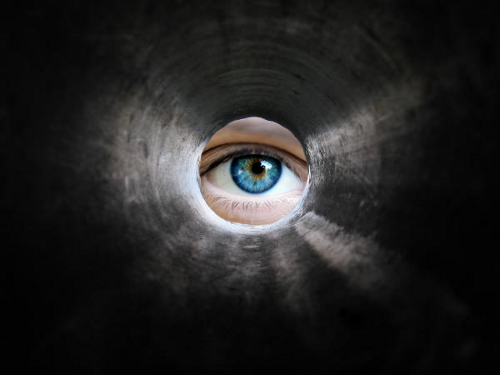 Last month, many of us enjoyed watching children participate in Easter egg hunts, whether on a large scale or in the backyard. While there are always children who find eggs quickly because they are older or more aggressive, other children simply have an advantage because they have better visual awareness than others. Did you find yourself wanting to help a child – “There’s one right in front of you!” “Here’s one to your right!” – Yet the child just couldn’t seem to see the egg? This lack of visual awareness in a busy or crowded environment can be caused by a number of vision problems including poor peripheral vision.
Last month, many of us enjoyed watching children participate in Easter egg hunts, whether on a large scale or in the backyard. While there are always children who find eggs quickly because they are older or more aggressive, other children simply have an advantage because they have better visual awareness than others. Did you find yourself wanting to help a child – “There’s one right in front of you!” “Here’s one to your right!” – Yet the child just couldn’t seem to see the egg? This lack of visual awareness in a busy or crowded environment can be caused by a number of vision problems including poor peripheral vision.
Peripheral vision is your ability to see objects and movement to the side or below you while focused on a central object or activity directly in front of you. Loss of side vision can make riding a bike, driving a car or motorcycle particularly dangerous. When driving, your “blind spot” is the position where you do not have peripheral vision. When a vehicle is overtaking you, the point at which you are able to see it is when you have gained peripheral vision.
Here is a fun 90-second video exercise which gives some insight into your peripheral vision
At what point did you lose the ability to see your fingers wiggling? Were you able to see them in a full half circle and further, or did you lose sight of them before you probably should have?
Poor peripheral vision can be caused by a number of factors including nutritional deficiencies and sinusitis, as well as migraines, concussion, glaucoma, stroke, retinal detachment and brain tumors. Loss of peripheral vision is a warning indicator that should not be ignored.
Children with binocular vision (two-eyed vision) issues may have reduced peripheral vision, yet pass a general eye exam, which checks only central vision. These children may experience a wide range of visual symptoms, such as difficulties with balance and coordination, reading & spatial awareness, social and behavioral, which may be improved through vision therapy with a developmental optometrist.
“Tunnel vision” is an analogy often applied when describing reduced peripheral vision, because driving through a tunnel removes and darkens objects on both sides of you.
Reading with “tunnel vision” is particularly difficult because the reader can generally focus on only one or two words at a time without the ability to scan ahead to the next word or track across the page. Reading is frustrating, time-consuming and often leads to a lack of attention span and a misdiagnosis of ADHD.
Clues to watch for if someone has diminished peripheral vision:
- Bumping into or tripping over objects
- Tilting the head when reading, using a finger to follow text, or avoidance of reading
- Poor visual awareness of objects and surroundings
- Difficulty navigating stairs
- Reduced night vision or trouble seeing in dim light
- Surprise when approached from the side
- Poor sports skills, such as being unaware a defender is overtaking you or having the ball easily stolen
If you have never had your peripheral vision checked or if you or your child displays any of the above symptoms, it is advisable to have a vision evaluation as soon as possible. A developmental optometrist can do a detailed examination of all aspects of your vision and determine if peripheral vision is reduced or if other vision problems are contributing to the above symptoms.
I have experience working with patients who have suffered concussions, brain tumors, and migraines. Vision therapy in conjunction with light therapy can provide relief and improvements for many of the visual symptoms of these problems and those listed above. The field of vision can be expanded with eye exercises and activities, as well as by inserting prisms into eye lenses for some patients. Our goal with therapy would be to increase and, in some cases, fully restore peripheral vision loss.
For an appointment or more information, please contact our office today, so that we may help you see life fully from every angle!